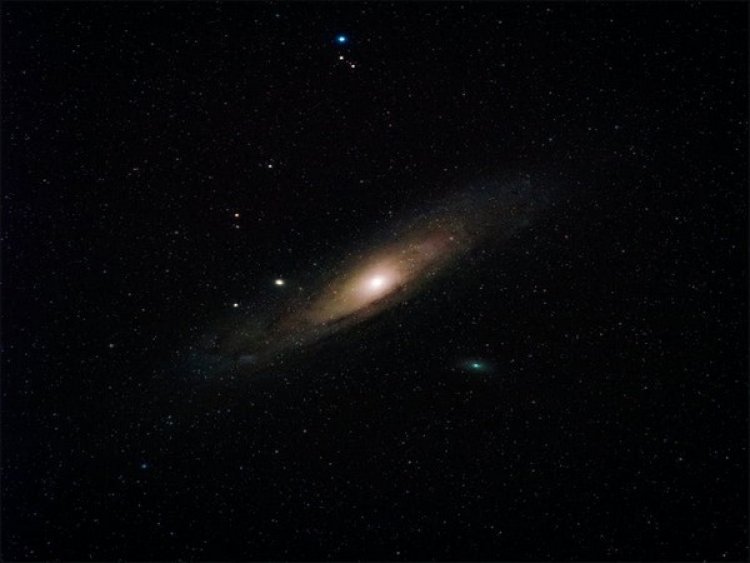Astronomers discover closest black hole to earth

Washington, US: The nearest known black hole to Earth has been found by astronomers utilising the International Gemini Observatory, run by the NOIRLab of the NSF.
It has been confirmed that a dormant stellar-mass black hole exists in the Milky Way for the first time. With only 1600 light-years between it and Earth, it is a fascinating subject for research to improve our knowledge of the development of binary systems.
The most extreme things in the universe are black holes. All huge galaxies presumably have supermassive versions of these unfathomably dense objects at their centres.
There are an estimated 100 million stellar-mass black holes in the Milky Way alone, which are significantly more prevalent and weigh five to one hundred times as much as the Sun. In contrast to dormant black holes, which do not flash strongly in X-rays as they consume matter from a nearby star companion, only a small number have been confirmed thus far, and nearly all of these are "active."
The closest black hole to Earth has been named Gaia BH1 by astronomers using the Gemini North telescope on the island of Hawaii, one of the twin telescopes of the International Gemini Observatory, which is run by NSF's NOIRLab.
It is three times closer to Earth than the previous record-holder, an X-ray pair in the constellation of the Monoceros. This dormant black hole is around 10 times as big as the Sun and is situated about 1600 light-years away in the constellation Ophiuchus. Exquisite studies of the motion of the black hole's partner, a star similar to the Sun that orbits the black hole at around the same distance as the Earth orbits the Sun, allowed for the new finding.
"Take the Solar System, put a black hole where the Sun is, and the Sun where the Earth is, and you get this system," explained Kareem El-Badry, an astrophysicist at the Center for Astrophysics | Harvard & Smithsonian and the Max Planck Institute for Astronomy, and the lead author of the paper describing this discovery.
"While there have been many claimed detections of systems like this, almost all these discoveries have subsequently been refuted. This is the first unambiguous detection of a Sun-like star in a wide orbit around a stellar-mass black hole in our Galaxy."
The few stellar-mass black holes that have been found were revealed by their energising interactions with a companion star, despite the fact that there are probably millions of them roaming the Milky Way Galaxy. Superheated material from a nearby star spirals in toward the black hole, where it produces intense X-rays and material jets. When a black hole is dormant (i.e., not actively feeding), it simply merges into its surroundings.
"I've been searching for dormant black holes for the last four years using a wide range of datasets and methods," said El-Badry. "My previous attempts -- as well as those of others -- turned up a menagerie of binary systems that masquerade as black holes, but this is the first time the search has borne fruit."
Data from the Gaia spacecraft of the European Space Agency were initially examined by the researchers to determine the system's potential presence of a black hole. Gaia captured the minuscule deviations in the star's velocity brought on by an invisible huge object.
El-Badry and his team used the Gemini Multi-Object Spectrograph instrument on Gemini North to study the system in greater detail. This device accurately determined the companion star's orbital period by measuring the companion star's velocity as it circled the black hole. The team was able to identify the central body as a black hole around 10 times as massive as our Sun thanks to the Gemini follow-up observations, which were essential in putting constraints on the orbital velocity and, consequently, masses of the two components in the binary system.
"Our Gemini follow-up observations confirmed beyond reasonable doubt that the binary contains a normal star and at least one dormant black hole," elaborated El-Badry. "We could find no plausible astrophysical scenario that can explain the observed orbit of the system that doesn't involve at least one black hole."
As they only had a small window to conduct their follow-up observations, the team relied not only on Gemini North's excellent observational capabilities but also on Gemini's capacity to deliver data on short notice.
"When we had the first indications that the system contained a black hole, we only had one week before the two objects were at the closest separation in their orbits. Measurements at this point are essential to make accurate mass estimates in a binary system," said El-Badry. "Gemini's ability to provide observations on a short timescale was critical to the project's success. If we'd missed that narrow window, we would have had to wait another year."
The unique configuration of the Gaia BH1 system is difficult to explain using astronomers' current concepts of the evolution of binary systems. The progenitor star, which later evolved into the newly discovered black hole, would have had a mass at least 20 times that of the Sun.
It would have had a short lifespan of a few million years. If both stars had formed simultaneously, this enormous star would have quickly evolved into a supergiant, inflating and swallowing the second star before it had a chance to develop into a proper, main-sequence star like our Sun, which burns hydrogen.
It is not at all clear how the solar-mass star could have survived that episode, ending up as an apparently normal star, as the observations of the black hole binary indicate. Theoretical models that do allow for survival all predict that the solar-mass star should have ended up on a much tighter orbit than what is actually observed.
This could indicate that there are important gaps in our understanding of how black holes form and evolve in binary systems, and also suggests the existence of an as-yet-unexplored population of dormant black holes in binaries.
"It is interesting that this system is not easily accommodated by standard binary evolution models," concluded El-Badry. "It poses many questions about how this binary system was formed, as well as how many of these dormant black holes there are out there."















































